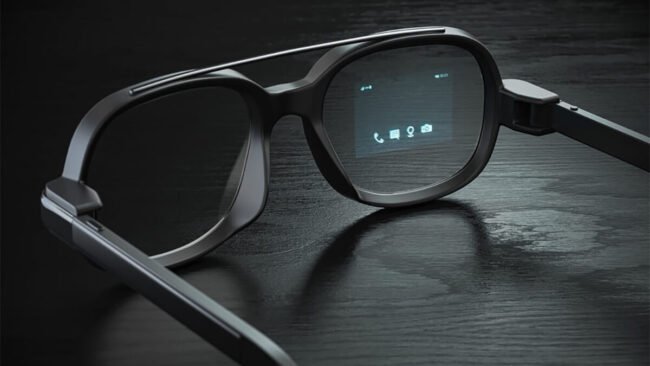Smart glasses and wearable technology are steadily moving from the pages of science fiction into our daily lives. Although early efforts such as Google Glass failed to captivate the public’s interest, the technology has persistently advanced in the background. Major players such as Meta and Apple have entered the field, positioning smart glasses to play a significant role in our technological future. This article will explore the current landscape of smart glasses, the advancements driving them forward, their potential applications, and the challenges they still face.
The Current State of Smart Glasses
The smart glasses available today are far more advanced than their predecessors. Products like Meta’s Ray-Ban Stories and Amazon’s Echo Frames have prioritized style and subtlety, integrating technology into familiar designs. These devices offer features like hands-free calls, music playback, and voice assistant access without the bulky, conspicuous look of earlier models. The focus has shifted from creating an all-in-one computer for your face to providing a convenient, connected accessory. These glasses serve as an extension of your smartphone, allowing for quick access to information and media while you remain present in your surroundings. This approach has made them more appealing to a broader audience, setting the stage for more ambitious developments.
Advancements in Wearable Technology
Several key technological advancements are fueling the evolution of smart glasses. Miniaturization is a major factor; components like processors, batteries, and cameras are becoming smaller and more powerful. This allows for sleeker designs that don’t compromise on functionality. Display technology is another critical area. Innovations in micro-OLED and waveguide displays are enabling clearer, brighter augmented reality (AR) overlays that blend digital information with the real world more seamlessly. Furthermore, improvements in battery life, connectivity through 5G, and the integration of sophisticated AI are making these devices more practical and powerful. These combined advancements are paving the way for a new generation of smart glasses that can offer truly immersive and useful experiences.
Potential Applications Across Industries
The future applications for smart glasses and wearable technology are vast and transformative. In healthcare, surgeons could use AR overlays to view patient data and 3D models of organs during complex procedures, enhancing precision and safety. In manufacturing and logistics, workers could receive hands-free instructions, view schematics, and get real-time support, improving efficiency and reducing errors. For consumers, smart glasses could revolutionize navigation, offering turn-by-turn directions directly in their line of sight. They could also change how we interact with the world, providing instant language translation, product information, or interactive educational content. As the technology matures, it will likely find its way into nearly every aspect of professional and personal life.
Challenges and Limitations Ahead
Despite the exciting potential, significant challenges remain. Privacy is a primary concern; the ability of smart glasses to record audio and video raises questions about consent and surveillance. Data security is another hurdle, as these devices will handle sensitive personal information. From a technical standpoint, achieving all-day battery life in a slim form factor is still a major challenge. There are also social and ethical considerations. To ensure responsible use of these devices in public spaces, we must establish new norms. Overcoming these obstacles will be crucial for the widespread adoption and long-term success of smart glasses.
A New Way of Seeing the World
The journey of smart glasses and wearable technology is just beginning. As the hardware becomes more sophisticated and the software more intelligent, these devices are set to move beyond niche accessories and become integrated tools that enhance our daily reality. They promise a future where digital information is seamlessly woven into our physical world, making our interactions smarter, more efficient, and more connected. Despite the need to address challenges around privacy and social acceptance, the forward momentum remains undeniable. The coming years will likely see smart glasses become an increasingly common and impactful part of our technological landscape.
FAQs
1. What is the main difference between smart glasses and VR headsets?
Smart glasses are designed to augment your view of the real world with digital information (augmented reality), allowing you to stay present in your environment. VR headsets, on the other hand, are designed to completely immerse you in a virtual world, blocking out your physical surroundings.
2. Are current smart glasses a replacement for smartphones?
No, not yet. Most current smart glasses act as accessories to smartphones, relying on them for connectivity and processing power. They offer convenience for specific tasks but do not have the full functionality of a smartphone.
3. What are the primary privacy concerns with smart glasses?
The primary privacy concerns involve the built-in cameras and microphones. There are worries about users recording people without their consent, as well as the potential for companies to collect vast amounts of data about a user’s surroundings and activities.
4. How will 5G technology impact smart glasses?
5G will provide the high-speed, low-latency connectivity needed for smart glasses to process large amounts of data in real time. This is essential for advanced AR applications, cloud-based processing, and seamless communication, making the devices more powerful and responsive.
5. When can we expect smart glasses to become mainstream?
While some models are available now, widespread mainstream adoption is likely still several years away. Experts predict it will take more advancements in battery life, display technology, and cost reduction, as well as the development of compelling applications, before smart glasses become as common as smartphones.




